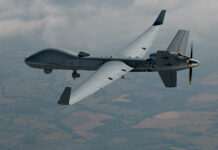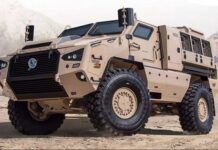“An aircraft carrier is 100,000 tons of diplomacy”, Henry Kissinger once said. In this sense, India’s first Indigenous Aircraft Carrier (IAC) INS VIKRANT sailed into history last month as she was launched for sea trials, thereby catapulting India into the elite club of nations owning the niche technology to design and construct an aircraft carrier.
The 40,000-ton reincarnated INS VIKRANT, named after India’s very first aircraft carrier acquired in 1961 from the UK and decommissioned in 1997, successfully completed her five-day maiden sea voyage in south-western India. The other carrier-owning navies of the world are the USA, France, the UK, Italy, Russia, and China.
The vessel is expected to be officially commissioned into the Indian Navy in 2022, coinciding with India’s commemoration of the 75th anniversary of independence. It is expected that the INS VIKRANT will be fully operational by mid-2023 after the integration of its air element, following the trials of Russian MiG-29K fighters and the indigenously produced advanced light helicopters.
Project Background
Constructed with a budget of US$3.15Bn under the codename Project-71, INS VIKRANT has 76 per cent indigenous content and has been designed by the Indian Navy’s Directorate of Naval Design (DND) and constructed by the Indian Government-owned Cochin Shipyard Limited (CSL), under the Ministry of Shipping. INS VIKRANT has proven to be the shining beacon by giving a big push to India’s “Atma Nirbhar” pitch pioneered by Prime Minister Narendra Modi. This is CSL’s and the Indian Navy’s premiere attempt at carrier design and construction.
The carrier’s power generation and propulsion worthiness have already undergone testing at harbour as part of basin trials in November 2020, after which the sea trials ought to have begun, but the delay is attributable to the second wave of the COVID-19 pandemic. The dedicated efforts of engineers, OEMs, designers, inspectors, overseers and the ship’s crew have more than made up for the delay.
The indigenous construction has accelerated the growth in indigenous design and construction capabilities besides developing a large number of ancillary industries, leading to the creation of employment opportunities for 2,000 CSL personnel and about 12,000 employees in ancillary industries. Over 76 per cent indigenous content towards procurement of equipment, besides work by CSL and their sub-contractors is being directly invested back into the Indian economy. Around 550 Indian firms, including about 100 MSMEs (medium small and micro enterprises) are registered with CSL, who are providing various services for INS VIKRANT.
Sea Trials
On her maiden sea trial voyage off Kochi, the VIKRANT’s performance, including the main propulsion, hull, auxiliary equipment and power generation & distribution were tested and proven successful. After the VIKRANT’s launch, trials have been progressing as planned to test the systems’ parameters. The initial trials are being conducted by the shipyard.
Indian Navy’s former Chief of Naval Staff Adm. Sureesh Mehta (Retd) says, “This project has been going on for a long time. We started by building smaller ships, then big ships and now we have gained the expertise to build a carrier. It’s important to be self-reliant, as not everyone sells you a carrier, then we have to settle for a second hand one in which the cost goes up as part of the refit.”
Viewed as historical and a major milestone, the IAC’s delivery is likely to strengthen India’s position in the Indian Ocean Region (IOR) and its quest to become a blue water Navy.
Strategic Reach
Former First Sea Lord of the Royal Navy Admiral Sir Mark Stanhope, has said, “To put it simply, countries that aspire to strategic international influence have aircraft carriers.”
Realising the importance of aircraft carriers having strategic influence and the extended reach, countries like Brazil, Japan, Australia, Egypt, South Korea, Turkey who operate helicopter carriers are aiming for fixed-wing integrated ones, with Japan surging ahead with its F-35B integration programme on board the IZUMO class helicopter carriers.
Indian Naval aviator Vice Adm. Shekhar Sinha (Retd) says, “A carrier is the biggest power projection tool and extends your reach, helps in support, action and projection. India has a primacy in naval power among the littoral neighbours in the IOR. Smaller countries are influenced by both soft and hard power which China uses, but China will take time for operational competence, as imbibing carrier aviation and having it are two different things. India has been operating a carrier since 1961 and China started much later.” From the days of WW1, the influence an aircraft carrier can have over the outcome of a war was well understood, as demonstrated with Pearl Harbour in WW2.
Aircraft Carrier Importance
Being the largest navy in the IOR, India has time and again exhibited its power both in peacetime and conflict, as the old, decommissioned, INS VIKRANT expedited East Pakistan’s surrender in 1971. During the end of the Cold War, India responded to former President J Jayawardene’s call for carrier deployment off Sri Lanka.
With 29 IOR and 23 Indian Ocean Rim Association states, only India operates a carrier and therefore carries the responsibility of being the first responder and has thus demonstrated as such, especially for maritime assistance operations and rescue missions. The IOR states, being scattered in the region, make an aircraft carrier the preferred security platform for human assistance, disaster relief, rescue operations, medical help, evacuations and security patrols. It is great for messaging in the IOR.
Prime Minister Narendra Modi first spoke about SAGAR (Security And Growth for All in the Region) in Mauritius in 2016, a maritime policy which channels itself through regional groupings like ASEAN, BIMSTEC, and IORA.
China
While China has already acquired two aircraft carriers, there are reports that the third one is almost ready for launch. According to reports, China aspires to launch a Carrier Battle Group (CBG) in the region with one more being added by 2028, thereby upsetting the regional power balance. Beijing also aims at having ten carriers by 2050.
The Indian Navy has been persistent in its demand for three carriers, one for each seaboard, as it aspires to be IOR’s net security provider and to counter China which has reportedly increased patrols in the IOR. Indian Naval Chief Adm. KB Singh has projected the Indian Navy’s strategy to carry out CBG supported operations.
The second indigenous aircraft carrier, the 65,000-ton IAC-2, to be christened INS VISHAL, with a CATOBAR system is still in the planning stage. This will be the Indian Navy’s largest warship which fits well into the overall operational strategy. Delayed due to funding issues, the Indian Navy has done away with the nuclear propulsion to bring down INS VISHAL’s cost from approximately US$13.6Bn down to US$6.1Bn.
Aircraft carriers find a place in today’s asymmetric warfare, like it had in former times of maritime diplomacy. Carriers are being used by militaries the world over as deterrents owing to their precise and fast-paced military power projection in limited localised combat scenarios.
INS VIKRANT’s Specifications
The 40,000 ton IAC INS VIKRANT is 262 m long, 62 m wide and has a height of 59 m, including the superstructure. There are 14 decks in all, including five in the superstructure. The ship has over 2,300 compartments, designed for a ship’s complement of around 1,700 crew members, including specialised cabins to accommodate female officers. The ship has been designed with a very high degree of automation for ship navigation, machinery operation and survivability. VIKRANT has a top speed of around 28 knots and a cruising speed of 18 knots with an endurance of about 7,500 nautical miles. The ship can accommodate an assortment of fixed wing and rotary aircraft.















